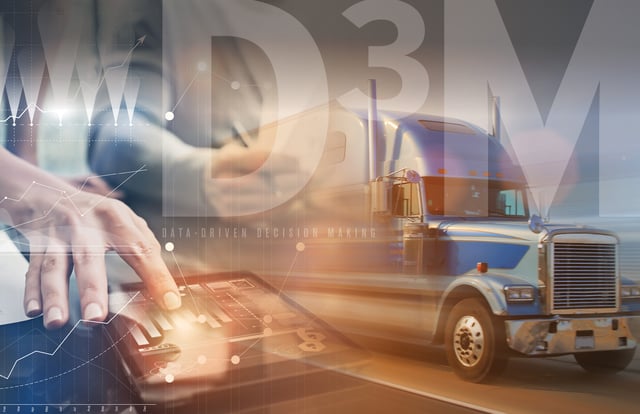Data-driven decision making (D3M) involves listening to what the Six Sigma folks call the “voice of the process”, or paying attention to the actual data that emerges from your day-to-day execution of business processes. It means bringing the objective, measurable outcomes of your performance into the middle of your decision making so it can inform, guide and shape your decisions.
For many of us, this involves a significant change in business culture. Traditionally, we have made decisions based primarily on our experience and the sharpened intuition that experience provides.
Shifting to a D3M approach involves putting data ahead of intuition and experience. The latter are still crucial, but we put them to work in the context of an objective set of measures and insights that focus our attention and our efforts.

Changing the Business Culture
Changing the culture of a business is difficult, requiring sustained effort. Moreover, leadership must “walk the talk” to be successful. Some of what you can expect from a transition to a D3M approach includes:
▪ A definable process for approaching and making business decisions;
▪ The ability to trace the lineage of a decision back to the data that engendered it;
▪ Increased accountability among your staff (the data is what it is; there is no place to hide);
▪ Increased emphasis on the quality, completeness and timeliness of your data; and
▪ Support for a consistent and sustainable “Evaluate – Decide – Do – Measure – Evaluate” cycle of operational and strategic innovation.
Guiding Principles for Building a D3M Enterprise
Several principles guiding the development of a platform to enable the technology transition needed to support D3M.
▪ Data is a highly valuable strategic asset for the business
• The foundation for innovation and competitive advantage
• Comes in all shapes, sizes and types, requiring consolidation from across the enterprise and organization by subject area to be leveraged
• Must be governed, managed and secured
▪ Data should be decoupled from individual users
• Owned, governed, managed and secured by the enterprise
• Served to users and other consumers via defined data services
▪ Binding Data to Business Processes, Rules, Terminology and Models should be done later rather than earlier
• Collect and consolidate all data—structured, semi-structured and unstructured—in a common, informal format with no or few presuppositions
• Model data that supports analytics in consistent and stable use cases
• Relate (late binding) data on demand for maximum agility in meeting business needs and integration requirements
Ready to make better data-driven decisions? Download our FREE white paper, Big Data Driven Transportation Analytics and learn how big data can supplement your analytics and help your company make faster, more educated decisions.



